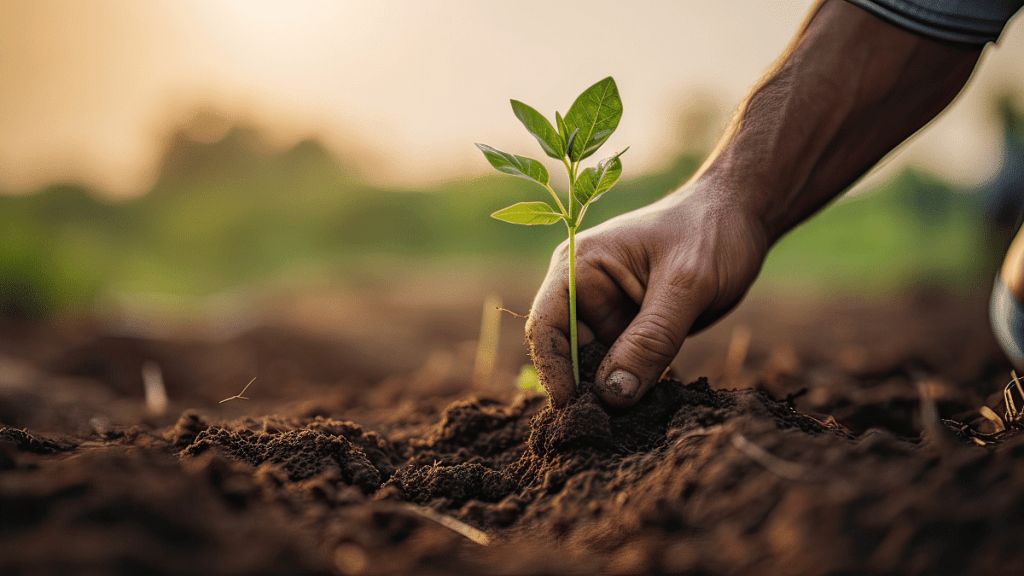Are you ready to unlock the secrets to a more sustainable life? As the world faces pressing environmental challenges, it’s crucial for each of us to take responsibility and make conscious choices that reduce our carbon footprint. By adopting sustainable practices, we can contribute to a greener future and create a positive impact on the planet. In this comprehensive guide, we’ll explore 12 actions you can take to live a more sustainable life. From conserving water to reducing food waste, each step brings us closer to a more sustainable and eco-friendly lifestyle. So let’s dive in and unlock the secrets to sustainable living!
Section 1: Advocate for Change
Inform Yourself and Vote for Change
To initiate change, we must first educate ourselves on the current environmental issues and understand the policies that can address them effectively. By staying informed and aware, we can vote for political candidates who prioritize environmental sustainability. Supporting policymakers who advocate for sustainable practices is crucial in driving meaningful change. Remember, your voice matters, so make it heard by engaging in conversations about climate change and its impact on our planet.
Volunteer and Take Action
Beyond voting, volunteering your time and skills for local non-profits and environmental organizations can make a significant difference. By actively participating in demonstrations and initiatives, you can contribute to the collective effort in combatting climate change. Whether it’s organizing community clean-ups or spreading awareness about sustainable practices, every action counts.
Section 2: Embrace Plant-Based Foods
Reduce Your Meat Consumption
The meat industry is a major contributor to greenhouse gas emissions, deforestation, and water pollution. By reducing your meat consumption, you can significantly decrease your carbon footprint. Consider incorporating more plant-based foods into your diet, such as fruits, vegetables, legumes, and grains. These options not only have a lower environmental impact but also offer numerous health benefits.
Support Local and Organic Agriculture
Another way to embrace sustainable eating is by supporting local farmers and choosing organic produce. Local farmers often employ sustainable farming practices, reducing the need for long-distance transportation and minimizing carbon emissions. Additionally, organic farming methods prioritize soil health and biodiversity, promoting a healthier ecosystem.
Section 3: Reduce Transportation Emissions
Opt for Sustainable Modes of Transportation
Transportation is a significant contributor to carbon emissions. By choosing sustainable modes of transportation, such as walking, biking, carpooling, or using public transit, you can reduce your personal carbon footprint. Whenever possible, consider teleconferencing for business meetings and vacationing by train to minimize air travel.
Drive Less, Drive Green
If driving is necessary, explore options for reducing your emissions. Electric vehicles (EVs) are an eco-friendly alternative to traditional gasoline-powered cars. As the EV market continues to expand, investing in an electric vehicle can significantly reduce your transportation-related carbon emissions.
Section 4: Minimize Single-Use Plastics
Say No to Single-Use Plastics
Single-use plastics, such as plastic bags, water bottles, and straws, have a detrimental impact on the environment. Opt for reusable alternatives like cloth grocery bags, stainless steel water bottles, and bamboo or metal straws. By minimizing your reliance on single-use plastics, you can help reduce plastic pollution and protect marine life.
Embrace Sustainable Packaging
When shopping, prioritize products that use environmentally friendly and recyclable packaging materials. Look for brands that are committed to sustainable packaging practices and choose products with minimal packaging whenever possible. By supporting businesses that prioritize sustainable packaging, you can encourage others to follow suit.
Section 5: Conserve Water Resources
Practice Water Conservation
Water is a precious resource, and conserving it is essential for a sustainable future. Simple habits like taking shorter showers, fixing leaky faucets and toilets, and using water-saving appliances can significantly reduce your water consumption. Consider installing a rainwater harvesting system to collect rainwater for various household uses, such as watering plants or washing your car.
Embrace Drought-Tolerant Landscaping
Converting your lawn to drought-tolerant landscaping is an effective way to conserve water. Native plants that are adapted to your region’s climate require less water and maintenance. Additionally, incorporating mulch in your garden helps retain moisture and reduces the need for frequent watering.
Section 6: Optimize Energy Usage
Reduce Your Energy Consumption
Conserving energy not only reduces your carbon footprint but also saves you money. Simple actions like turning off lights and appliances when not in use, using energy-efficient light bulbs, and utilizing natural light can make a significant difference. Consider investing in smart home technologies that allow you to monitor and control your energy usage more effectively.
Embrace Renewable Energy
Transitioning to renewable energy sources, such as solar or wind power, is an impactful way to reduce reliance on fossil fuels. Installing solar panels on your roof or purchasing renewable energy from your utility provider can help you lower your carbon emissions and contribute to a cleaner energy future.
Section 7: Reduce Food Waste
Plan Meals and Reduce Food Waste
Food waste has a significant environmental impact. By planning meals, buying only what you need, and properly storing leftovers, you can minimize food waste in your household. Additionally, composting organic waste is an excellent way to divert it from landfills and create nutrient-rich soil for your garden.
Support Food Recovery and Donation Programs
Consider donating excess food to local food banks or participating in food recovery programs. These initiatives help provide nutritious meals to those in need and reduce food waste simultaneously. By supporting such programs, you contribute to a more sustainable and equitable food system.
Section 8: Choose Sustainable Products
Prioritize Sustainable Consumption
Before making a purchase, consider the environmental impact of the product. Look for certifications like Fair Trade, Leaping Bunny, or B Corporation to ensure that the items you buy meet rigorous sustainability standards. Additionally, opt for durable and high-quality products that are designed to last, reducing the need for frequent replacements.
Embrace Second-Hand Shopping
Shopping for second-hand items is an excellent way to reduce waste and support a circular economy. Explore thrift stores, online marketplaces, and community swap events to find unique and affordable pre-loved items. By giving these products a new life, you contribute to the reduction of resource extraction and manufacturing waste.
Section 9: Foster Sustainable Practices at Home
Practice Green Cleaning
Traditional cleaning products often contain harmful chemicals that can negatively impact the environment. Opt for eco-friendly cleaning products that use natural ingredients and sustainable packaging. Alternatively, you can make your own cleaning solutions using simple and non-toxic ingredients like vinegar, baking soda, and lemon juice.
Create a Sustainable Home Environment
Make your home more sustainable by adopting energy-efficient practices. Install programmable thermostats, use insulation to minimize heat loss, and replace old appliances with energy-efficient models. Additionally, consider installing a rainwater harvesting system or solar panels to further reduce your environmental impact.
Section 10: Educate and Inspire Others
Share Your Knowledge
Spread the word about sustainable living and inspire others to make a positive impact. Share your knowledge and experiences with friends, family, and your community. Engage in conversations about sustainability, and encourage others to adopt eco-friendly practices in their daily lives.
Lead by Example
Actions speak louder than words. Embrace sustainable practices wholeheartedly and let your actions inspire others. By demonstrating the benefits and feasibility of sustainable living, you can motivate those around you to follow suit.
Conclusion: Unlocking a Sustainable Future
Every individual has the power to make a difference in creating a sustainable future. By implementing these 10 actions into your daily life, you can unlock the secrets to sustainable living. From advocating for change and embracing plant-based diets to reducing transportation emissions and conserving water resources, each step brings us closer to a greener and more sustainable world. Remember, it’s not just about individual actions; it’s about fostering a collective commitment to a better future. So join the movement, make sustainable choices, and inspire others to do the same. Together, we can unlock a sustainable future for generations to come.












